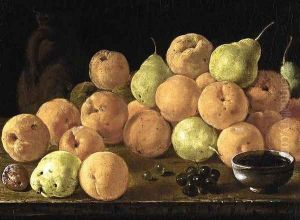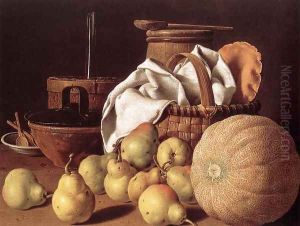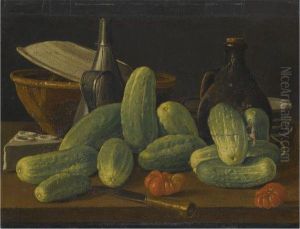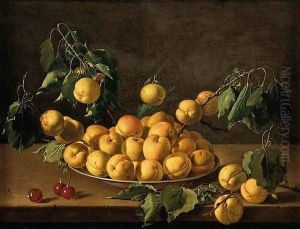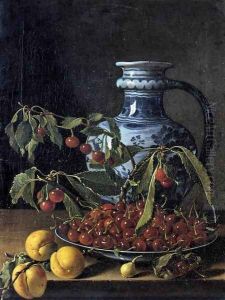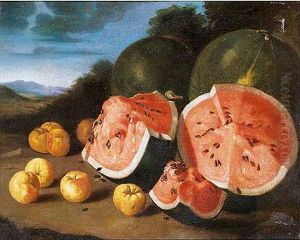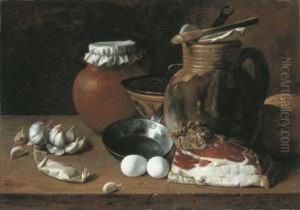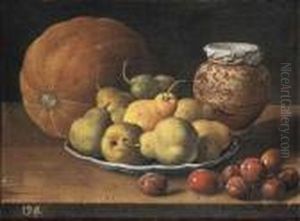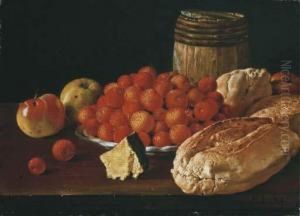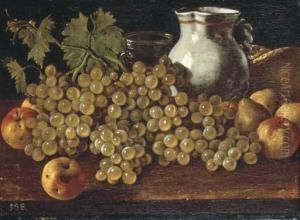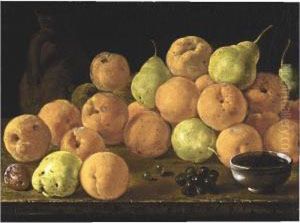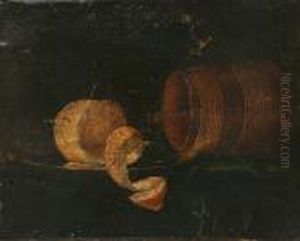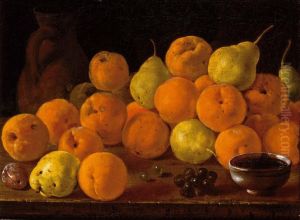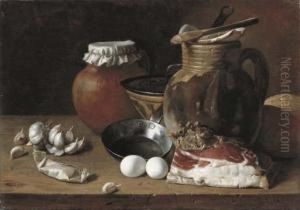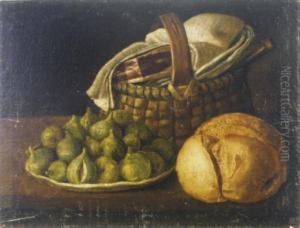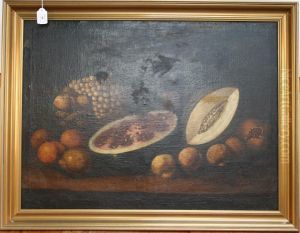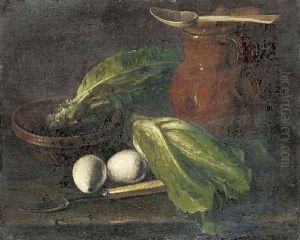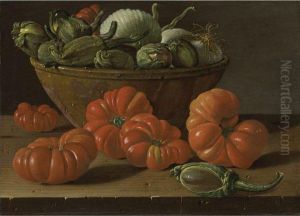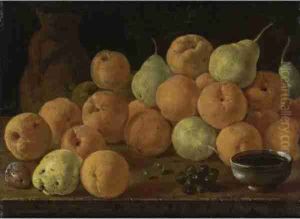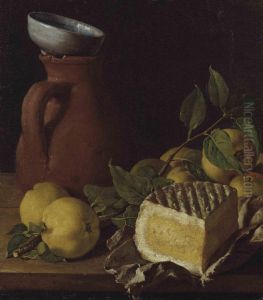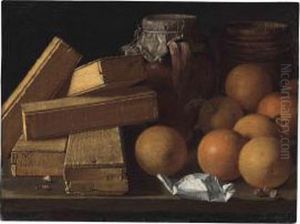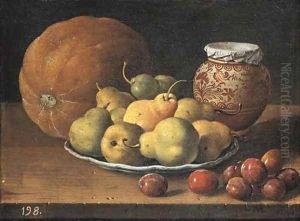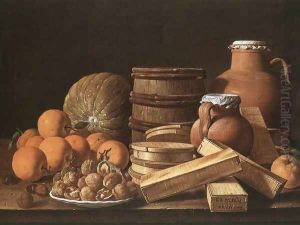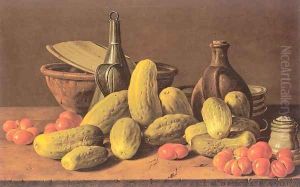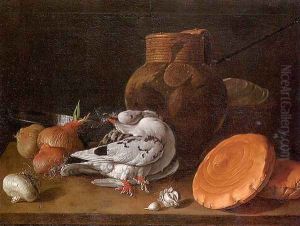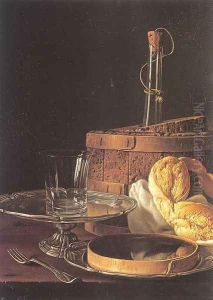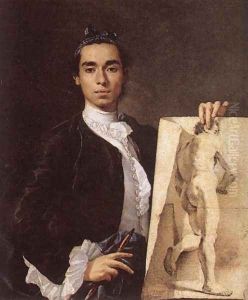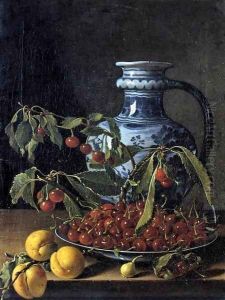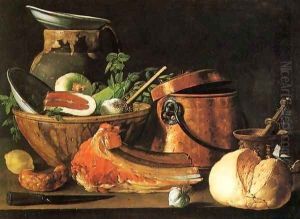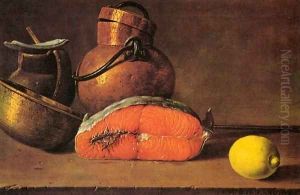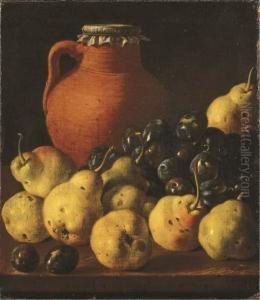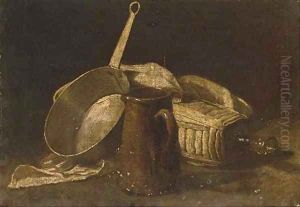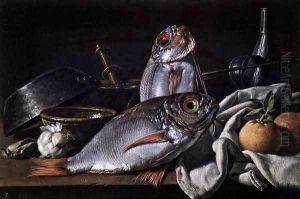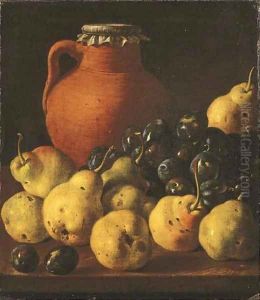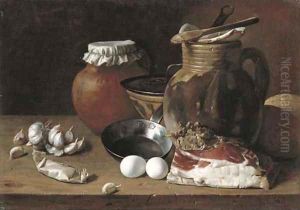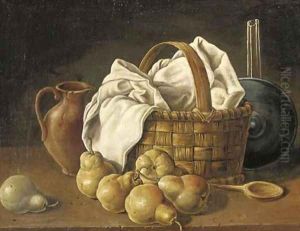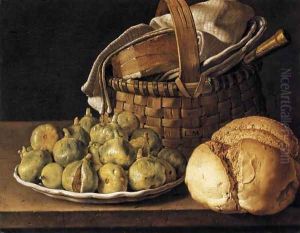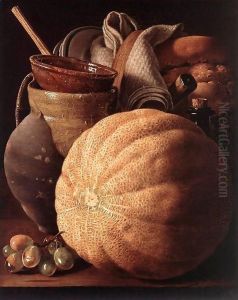Luis Eugenio Melendez Paintings
Luis Eugenio Meléndez was a Spanish painter, renowned for his still lifes, which are considered among the best of the genre in the 18th century. Meléndez was born on January 31, 1716, in Naples, Italy, where his father, Francisco Meléndez de Rivera Díaz, a Spanish miniaturist painter, was serving at the court of the Viceroy of Naples. His family returned to Spain in 1719, and Meléndez began his art studies under the guidance of his father.
In his early career, Luis Eugenio Meléndez's work was influenced by the Spanish Baroque style, particularly the bodegón, a genre which depicts kitchen items and food. He further developed his skills at the Royal Academy of Fine Arts of San Fernando, in Madrid, where he studied from 1742 to 1744. Despite his talent, Meléndez struggled to secure a position at the royal court, and his ambitions to become a court painter were not fulfilled.
Meléndez focused on still life painting, a genre that was less esteemed than historical or portrait painting at the time. However, he elevated the still life to a new level of precision and realism, using masterful composition and lighting to highlight the texture and form of his subjects. His works often featured arrangements of fruit, vegetables, and other foodstuffs, along with kitchenware, set against a dark background.
Luis Eugenio Meléndez's meticulous attention to detail and his ability to capture the subtleties of light and color garnered him some recognition during his lifetime, though he never achieved significant financial success. His work was largely forgotten until the 20th century when art historians began to reevaluate his contributions to the art of still life.
Meléndez's legacy is reflected in the quality and beauty of his paintings, which can be found in major museums around the world, including the Museo del Prado in Madrid, the Louvre in Paris, and the National Gallery in London. Despite the challenges he faced in his career, Meléndez is now celebrated as one of the greatest still life painters of the 18th century. He died in poverty on June 30, 1780, in Madrid, leaving behind a body of work that continues to be admired for its realism and technical skill.
